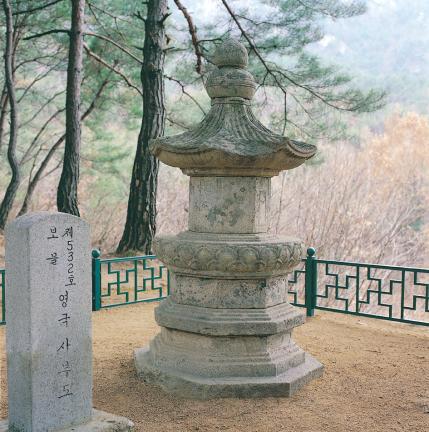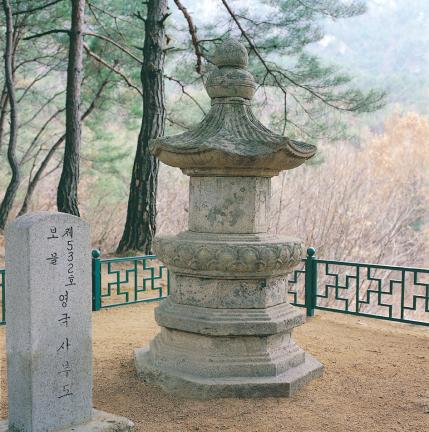국가유산 종목별 검색
보물
영동 영국사 승탑 (永同 寧國寺 僧塔)Stupa of Yeongguksa Temple, Yeongdong
| 분 류 | 유적건조물 / 종교신앙 / 불교 / 탑 |
|---|---|
| 수량/면적 | 1기 |
| 지정(등록)일 | 1971.07.07 |
| 소 재 지 | 충북 영동군 양산면 누교리 산138-1번지 영국사 |
| 시 대 | 고려시대(10세기) |
| 소유자(소유단체) | 영국사 |
| 관리자(관리단체) | 영국사 |


보물
영동 영국사 승탑 (永同 寧國寺 僧塔)Stupa of Yeongguksa Temple, Yeongdong
| 분 류 | 유적건조물 / 종교신앙 / 불교 / 탑 |
|---|---|
| 수량/면적 | 1기 |
| 지정(등록)일 | 1971.07.07 |
| 소 재 지 | 충북 영동군 양산면 누교리 산138-1번지 영국사 |
| 시 대 | 고려시대(10세기) |
| 소유자(소유단체) | 영국사 |
| 관리자(관리단체) | 영국사 |

ⓒ 2000. CULTURAL HERITAGE ADMINISTRATION. ALL RIGHTS RESERVED.



 국가유산
국가유산


